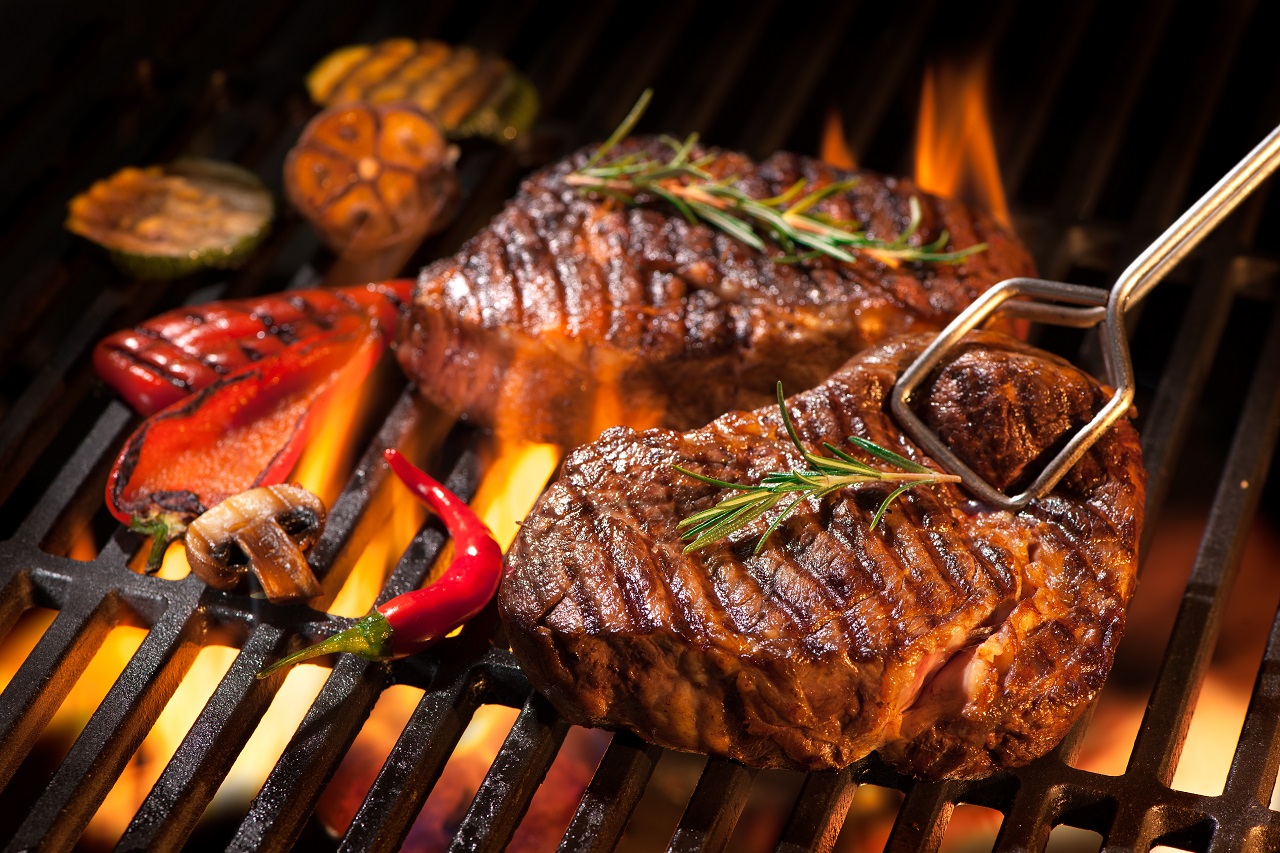
Grilling and broiling are both cooking methods that take advantage of direct heat to cook food.
Each of these techniques requires you to watch your food close. They both impart a charred and caramelized effect and distinctive flavor, yet they achieve these aims in different ways.
If you can’t grill outdoors or don’t have a smokeless electric grill, broiling is a great alternative.
Now, before we highlight the core differences between grilling vs broiling, let’s discuss a few basics on each technique.
I. Grilling 101

Grilling is the process of roasting food using a direct and dry heat source, typically from the bottom.
Many types of grills are on the market. You have many choices:
- Charcoal grills
- Gas grills (both propane and natural gas)
- Infrared grills
- Wood pellet grills
- Kamado grills
- Electric grills
When you’re grilling food, you place the ingredients on the grill grates, or in a grill pan, griddle, or skillet.
When you grill, you’ll yield smoky and charred caramelized meat you simply can’t achieve using an oven.
Grilling works well outdoors because of the ventilation needed and the amount of smoke generated.
Find the right grill for any event. Whether you are tailgating or setting up in your backyard, enjoy that classic BBQ taste!
II. Broiling 101

Broiling involves roasting food, also using a dry heat source, but it comes from above rather than below, as with grilling.
You can use multiple heat sources for broiling, including:
- Gas
- Charcoal
- Wood
- Induction
Broiling is typically performed either in an oven or in a specialized grill. Not all ovens are suitable for broiling, and many do not come equipped with this option at all.
Broiling creates a caramelized flavor, but it doesn’t replicate the distinct taste of charcoal grilling.
Broiling produces less smoke than grilling, so your food won’t have that smoky flavor.
III. Grilling vs Broiling: The Lowdown
Here’s a glimpse at using grills and broilers in the following core areas:
- Temperature control
- Preheating the surface
- Preventing and minimizing flareups
Temperature Control
A key difference between broiling and grilling is that your oven broiler has a thermostat for precise temperature control.
A first glance, you might imagine this makes your life easier, but this is not always the case.
With some ovens, the heating element will switch off when your oven hits a set temperature (usually from 500F to 550F). With the heating element off, the food will be baking – cooking in its own steam – rather than broiling. Broiling, much like infrared cooking, used direct heat.
To sidestep this issue when you’re broiling, simply wedge the oven door slightly open. This lets the heat escape and prevents the oven from maxing out and powering down.
Preheating The Surface
With each of these cooking methods, you need the fat and grease to drip away. Preheating the cooking surface is a good way to quicken this process.
With a broiler, you just need to preheat the broiler pan. The direct heat method employed means there’s no need to preheat the whole oven. When you heat the pan, this helps you to sear your meat like a pitmaster!
Preventing and Minimizing Flareups
When you’re broiling or grilling, keeping a close eye on proceedings is important. You’ll find that foods can easily burn, and possibly even catch alight, when you’re grilling and broiling.
Always keep an oven mitt close at hand. Also, stay close to the food while it’s cooking.
Investing in an instant-read thermometer is another smart move.
Broiling might take slightly longer than grilling because of the lower temperatures, but the cooking times are similar.
IV. How to Get The Most Out of Your Broiler
Unlike grilling, broiling creates smoke indoors, so be mindful of your smoke alarm.
By watching your food close when it’s broiling, you can prevent any burning.
Properly prepare your meats before broiling them. Trim away any excess fat.
Also, go easy on oil-based marinades and never overcook.
V. 5 Great Ideas for Broiling Food
- Lean Cuts of Meat: Quick-cooking lean meats like pork tenderloin or flank steak are perfect for broiling because they cook in just minutes. You’ll need less than 20 minutes under a broiler to cook and caramelize a whole chicken breast
- Delicate Fish Dishes: Broiling is perfect for delicate fish as it prevents it from falling through the grates or sticking. Expect to cook a fish fillet in the broiler in just 5 to 6 minutes
- Char Vegetables: Veggies like eggplant, zucchini, and red peppers will all char to perfection under a broiler
- Caramelize Fruit: Caramelized peaches and grapefruit go great served with ice cream
- Kebabs and Pizzas: Use your broiler to cook kebabs and pizzas quickly with a pizza stone.
VI. Conclusion
Hopefully, this information from Hempen Hill BBQ has better compared between grilling vs broiling, two satisfying cooking methods.
Before you go today, bookmark our blog. Pop back soon for more great content on all aspects of grilling. We update our content daily, so don’t miss out on killer barbeque tips!